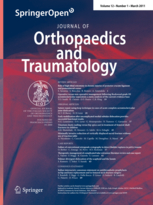
SHOULDER & ELBOW
Biologic grafts are suitable alternatives to synthetic ligaments in AC joint stabilization
J Orthop Traumatol. 2013 Dec;14(4):283-90. doi: 10.1007/s10195-013-0242-2. Epub 2013 May 740 patients with a complete and chronic acromioclavicular (AC) dislocations were randomized to undergo surgical AC joint stabilization using either a biological graft (semitendinosus) or a synthetic ligament. The purpose was to compare these two techniques with respect to clinical and radiological outcomes. Results indicated that patients undergoing the procedure with a biological graft had significantly better Constant-Murley scores at 1 year compared to those who underwent the procedure using a synthetic ligament. This difference was not significant at the 4-year follow-up. Clinical scores did not correlate with the number of subluxated shoulders, coracoclavicular ossification, AC joint osteoarthritis, or clavicular osteolysis. Furthermore, patient satisfaction was not related to the degree of AC joint reduction.
Unlock the full ACE Report
You have access to {0} free articles per month.Click below to unlock and view this {1}
Unlock NowCritical appraisals of the latest, high-impact randomized controlled trials and systematic reviews in orthopaedics
Access to OrthoEvidence podcast content, including collaborations with the Journal of Bone and Joint Surgery, interviews with internationally recognized surgeons, and roundtable discussions on orthopaedic news and topics
Subscription to The Pulse, a twice-weekly evidence-based newsletter designed to help you make better clinical decisions
Exclusive access to original content articles, including in-house systematic reviews, and articles on health research methods and hot orthopaedic topics
Or upgrade today and gain access to all OrthoEvidence content for just $1.99 per week.
Already have an account? Log in


Subscribe to "The Pulse"
Evidence-Based Orthopaedics direct to your inbox.
{0} of {1} free articles
Become an OrthoEvidence Premium Member. Expand your perspective with high-quality evidence.
Upgrade Now












































































